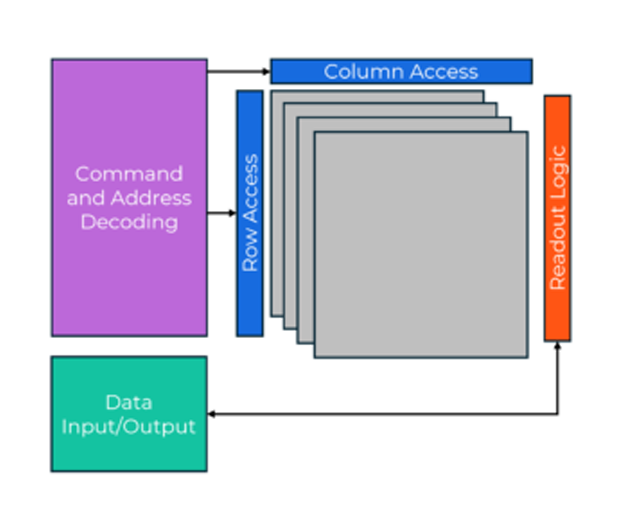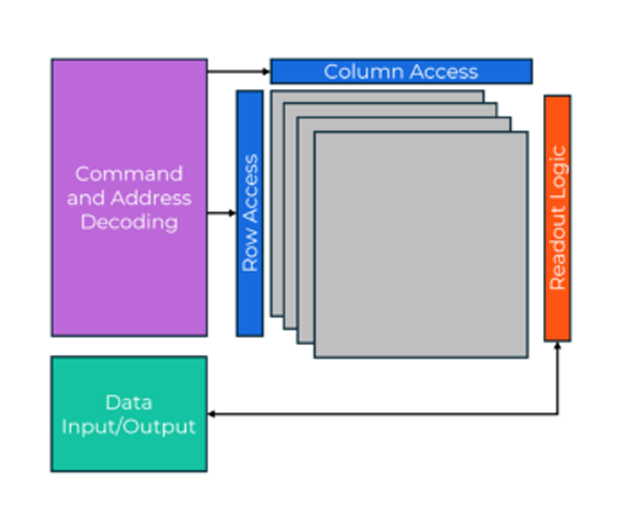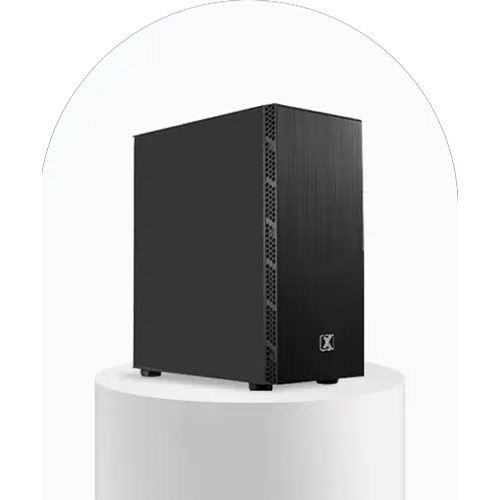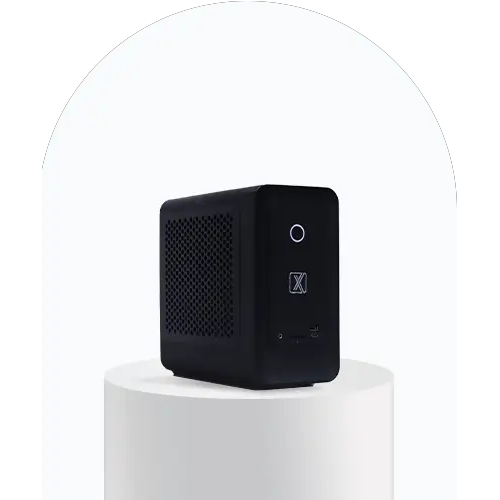For Professionals, By Professionals

Discover ProX PC for best custom-built PCs, powerful workstations, and GPU servers in India. Perfect for creators, professionals, and businesses. Shop now!
SERVICES
WE ACCEPT










Memory is one of the central elements of computing, directly affecting how efficiently systems perform tasks. Two prominent memory types—DDR (Double Data Rate) and GDDR (Graphics Double Data Rate)—serve different purposes in the computing ecosystem, tailored for CPUs and GPUs, respectively. This post explores their key differences, looking into architecture, bandwidth, speed, and latency to help you understand which is better suited for specific computing tasks.

DDR memory is widely used in traditional computing systems and primarily supports CPUs. Optimized for general-purpose computing, it serves tasks requiring fast access times and minimal latency, making it ideal for activities like running applications and operating system processes.
On the other hand, GDDR memory is specialized for graphics processing units (GPUs). With a primary focus on bandwidth over latency, GDDR is built to handle the intense data loads characteristic of graphics rendering, AI, and parallel processing tasks. It powers high-performance GPUs and allows them to manage complex visuals and data-intensive applications without bottlenecks.

Although DDR and GDDR share similarities in nomenclature, their underlying designs diverge significantly, with each optimized for different hardware and processing types:

DDR Architecture: DDR memory supports central processing units (CPUs) and is often found in computing devices where tasks are sequential. DDR is engineered for Complex Instruction Set Computing (CISC) architectures, which handle varied instructions and processes with complexity and precision. This makes DDR suitable for desktops, laptops, and servers.

GDDR Architecture: Unlike DDR, GDDR focuses on parallel tasks managed by GPUs, which use Reduced Instruction Set Computing (RISC). RISC architectures streamline processing by managing repetitive, linear workloads, ideal for graphics rendering and calculations for 3D models. This design allows GDDR to handle large data transfers, often required in graphics-heavy applications.

GDDR's edge lies in its wider memory bus and higher bandwidth:
Memory Bus Size and Bandwidth: GDDR's wider memory bus accommodates the massive data transfers needed for GPU operations, handling workloads like gaming graphics, high-resolution video rendering, and deep learning models. Advanced GDDR versions like GDDR6 and GDDR6X in GPUs such as the NVIDIA RTX 4090 achieve this by scaling up bandwidth, offering a smoother and more powerful experience in visual computing tasks.
Parallel Processing Capabilities: Since GPUs excel in parallel processing—simultaneously performing numerous calculations across multiple cores—GDDR is optimized to support this. Without a sufficient bandwidth, a GPU can face bottlenecks, which can slow down frame rates and lengthen rendering times. The high bandwidth of GDDR allows GPUs to meet the data demands of 3D rendering, image processing, and more, preventing these bottlenecks.
High-End Applications: In high-performance graphics applications, such as AAA games and VR, the demand for high bandwidth is immense. This need is met with the high-speed data access and wide memory bus of GDDR, making it essential for maintaining high frame rates and detailed visuals.

In contrast, DDR memory focuses on low latency rather than bandwidth:
Latency Optimization: For tasks managed by CPUs—like executing instructions, processing applications, or managing the operating system—lower latency is critical. DDR memory responds to this need by focusing on latency reduction, which determines how quickly data can be accessed. The latency in DDR is measured in CAS Latency (CL) values, which indicate the delay before data is available. Lower CL values, often seen in DDR4 and DDR5, translate to quicker access times for stored data, making it suitable for tasks requiring fast, sequential processing.
DDR5 Speed Advancements: The latest DDR5 memory standard offers high transfer speeds ranging from 4800 to 8400 MT/s (mega transfers per second). These faster speeds mean that data flows more efficiently between the CPU and memory, enhancing the overall responsiveness and performance of computing tasks. Although DDR5 has slightly higher CAS Latency values than DDR4, it compensates with higher frequencies, achieving an optimal balance between speed and latency for general-purpose computing.

DDR Speed and Latency: DDR focuses on achieving low latency, allowing the CPU to access data swiftly. The newer DDR5 standard, despite having a slightly higher CAS Latency than DDR4, maintains a favorable balance between speed and latency. This makes it suitable for multitasking environments like desktops and workstations where efficient communication between CPU and memory is essential.
GDDR Bandwidth and Speed: GDDR has a comparatively higher latency but compensates with significantly higher data transfer rates and wider bandwidth. This is why GDDR is more suitable for GPUs, as it allows them to access large amounts of data quickly, optimizing their performance for graphics rendering, video encoding, and deep learning.

As DDR5 establishes itself in the CPU domain, GDDR7 is emerging as the future of GPU memory technology. Recently announced by Samsung, GDDR7 offers:
Impressive Bandwidth: GDDR7 is expected to reach bandwidths up to 1.5 terabytes per second, with 32 gigabytes per second per pin. This is a substantial leap from GDDR6, making it ideal for next-generation GPUs.
Applications in High-Performance Computing (HPC): Such advancements in bandwidth mean GDDR7 is likely to play a crucial role in HPC tasks, accelerated AI workloads, and sophisticated graphics rendering.
The evolution of these memory types is critical for the computing landscape. As DDR and GDDR technologies advance, they continue to enhance the performance of both CPUs and GPUs, pushing the limits of computing power. DDR5 and GDDR7 represent the latest milestones in this journey, each contributing to their specialized domains with increased efficiency and performance capabilities.
In conclusion, DDR and GDDR serve different computing needs: DDR is essential for low-latency tasks managed by the CPU, while GDDR supports high-bandwidth applications managed by the GPU. By understanding these distinctions, users can make informed choices based on their specific performance needs, be it general-purpose computing or intensive graphics processing. As technology advances, we can expect further innovations in both DDR and GDDR, ultimately driving more efficient and powerful computing solutions across diverse industries.
For more info visit www.proxpc.com
Workstation Products

AI Development Workstations
View More

Edge Inferencing Workstations
View More

AI Model Training Workstations
View More
Share this: